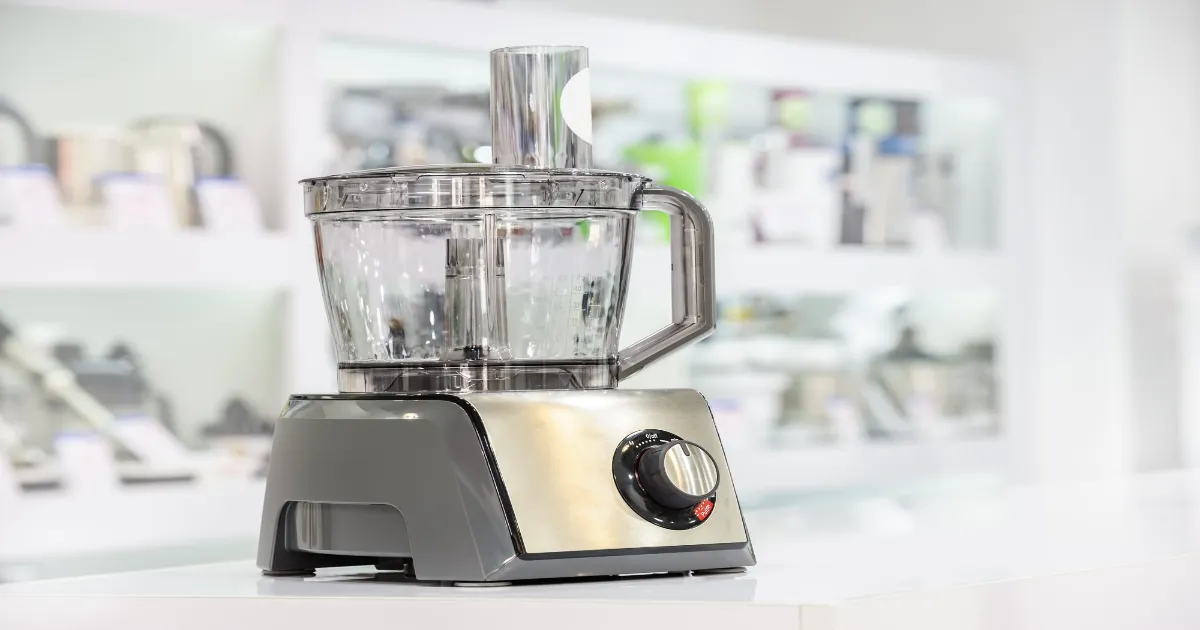Do you want to make smoothies but don’t have a blender? You may wonder, “can I use a food processor as a blender?” “Can You Make Smoothies In A Food Processor?” The food processor is a great way to make smoothies and other liquids instead of relying on the blender. It might surprise you just how well it works. A food processor is a great option if you’re looking for a versatile appliance that can do it all.
It can blend, chop, and dice, so it’s perfect for smoothies, soups, and sauces. Follow these simple steps to make a smoothie in your food processor.
Table of Contents
What Types Of Food Processors
“Can I use a food processor as a blender?” you may wonder. The answer is “it depends.” There are two types of food processors: those that can double as a blender, and those that cannot. If you have a food processor that cannot double as a blender, you will not be able to use it as a blender. However, if you have a food processor that can double as a blender, you can use it as a blender.
When it comes to the question of “can I use a food processor as a blender”, the main difference is that blenders are designed to create smooth, consistent textures, while food processors are designed for chopping and dicing food. If you’re looking to create a smoothie or other blended food, you’ll likely have better results with a blender.
However, if you’re looking to chop or dice food, a food processor will do the job just as well as a blender. If you have a food processor that can double as a blender, you can use it as a blender. However, if you only have a food processor that cannot double as a blender, you will not be able to use it as a blender.
So, if you’re wondering whether or not you can use a food processor as a blender, the answer is “it depends.”
No products found.
Can I Use A Food Processor As A Blender: The Differences
Can a blender be used as a food processor? Of course, these two types of machines are interchangeable, but first you need to know the difference between them to avoid damage when used incorrectly:
Blenders Vs. Food Processors: Different Blades
Blenders Fixed Blades
Traditional blenders often have a single, non-replaceable knife at the bottom of the jar. This blade may have several points positioned at different angles to aid in fully blending substances. Ice may be crushed, coarsely pureed materials, and even substances can be liquefied with one single blade.
Food Processors Have Many Blades Or Discs
Several blades and/or discs are commonly included with food processors. The blades have been used in the work bowl to purée, chop, mix, and occasionally knead. A whisk attachment that enables you to whisk, whip, and stir are included with certain food processors. Typically, drive adaptors and pins at the bowl’s base are used to slip in-bowl blades or accessories over them.
Food processor discs enable you to slice, shred, and occasionally dice when items are fed into the disc through the feed tube located in the upper of the work bowl. Discs with straight or serrated edges are available to shred and slice. The size of holes on a grating disc will determine how finely items will be shredded or grated.
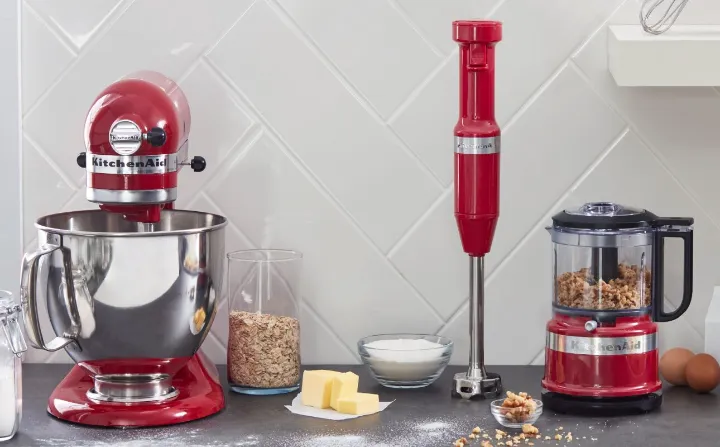
A slicing disc usually has different thickness settings that enable you to control your slices to be thicker or thinner. Some food processors will cut food into long strips. While a blender typically has only one or two blades at the bottom of the jar, a food processor has several different blades and discs that can be used for various purposes.
You can use a food processor to chop vegetables, purée soups, make the dough, shred cheese, and much more. A food processor can do many things as a blender, but it is not designed to create smooth, creamy textures like a blender. If you want to make smoothies, milkshakes, or other drinks with a creamy consistency, you will want to use a blender.
A food processor is better suited for chopping, slicing, and shredding tasks. Additionally, a food processor can make doughs and batters, whereas a blender cannot. So, can you use a food processor as a blender? Technically, yes. However, it is not the ideal tool for the job, and you may not be happy with the results.
If you need to create a smooth, creamy texture, stick to using a blender. For everything else, a food processor will do the trick.
Blenders Vs. Food Processors: Work Bowls And Jars
Blenders Come With Tall Jars
A smoothie jar’s tall edges help contain water recipes whenever they blend. The materials are kept moving throughout the jars and blades for an equal blending thanks to the height and shape. The pitcher-like jar typically has a handle, beveled sides, or a pouring mouth, making it ideal for transferring liquid substances.
Food Processors Use Wide Work Bowls

Food processors include broad, flat blades and discs to make precise cuts like chops or shreds. Thanks to a broader work bowl, the device has room to handle whole or bigger foods like potatoes or cucumbers. Large batch processing is also made possible by larger food processor bowls.
Can I Use A Food Processor As A Blender: The Commonalities
The configuration for food processors & blenders is very similar. Both blenders & food processors typically include a base-mounted motor. A jar or work bowl containing blades or discs must prepare or mix your food rests on this motor base. Each appliance does different jobs better than the others. You may switch appliances for specific recipes. A food processor grinds, chops, slices, and shreds.
It’s the ideal appliance for making baby food, sauces, pie crusts, and slicing vegetables. A blender is better at emulsifying and puréeing ingredients into a smooth liquid. If you want to make soup or margaritas, use a blender. Some appliances function as a food processor and blender, giving you the best of both worlds in one appliance. These machines are typically more expensive than a single-use appliances.
Specialties, Recipes, And Tasks To Make Inside A Blender
Wet Components
A blender will be your best pick if your recipe asks for largely liquid and soft components—like any smoothie or pureed soup. Additionally, use a blender rather than a food processor if you create anything you can eat without chewing.
Creamy Horchata Or Frothed Milk
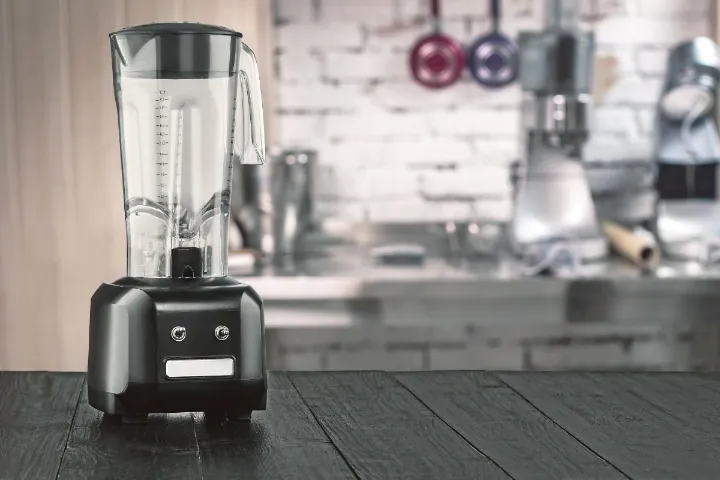
The ventilation from the rotating blades and downwards draw will produce lovely bubbles and light foam, while the contact from the blades will heat the milk. Use your blender to make creamy horchata or frothed milk for coffee, tea, or chocolate. You can also mix rice milk with spices to make horchata.
Puddings, Mousse, And Custards
Using your blender to combine the ingredients for puddings, custards, and mousse, you’ll learn how to get their smooth and fluffy texture. Create a light lemon mousse or add a fresh spin to a classic fruit-filled dessert with a pear clafouti.
Soups, Sauces, And Bisques
Use your blender to create silky-smooth soups, sauces, and bisques, such as smooth lobster bisque, flavorful spiced cantaloupe gazpacho, and creamy tomato soup. You’ll be the star of your weekend brunch if you can consistently blend a Hollandaise that won’t break in your blender.
Fruit smoothies and homemade applesauce are easily produced in a blender. For a uniquely personalized fruit puree, try adding cinnamon, berries, cherries, carrots, or mango chunks.
Frozen Drinks
A blender is your go-to kitchen tool for frozen beverages like frappéed frozen coffees or frozen cocktails like watermelon sangria, frozen coconut margaritas, or daiquiris. Choose a blender with an ice-crushing setting for frozen foods.
Flours And Nut Milks
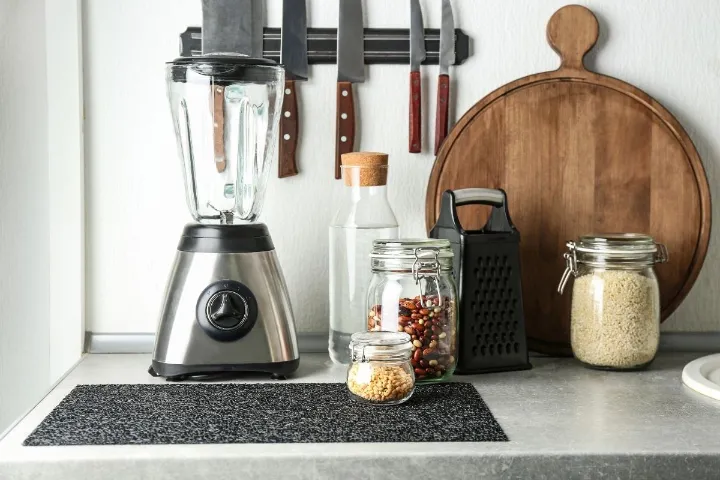
Nut kinds of milk and flours may be prepared at home using raw almonds and cashews that have been soaked and blended to create tasty and healthy nut milk. Using a powerful blender, you can crush almonds inside your gluten-free powder.
Nut Butters
Use a strong blender to make homemade peanut, almond, sunflower seed, or cashew butter. If you’ve had a blender spatula and tamper, it will be simpler to prepare the almond butter in limited quantities in the blender. To ground tough objects like nuts, a strong motor blender is required.
Milkshakes
Blenders work well for making milkshakes because they are frozen desserts. You may make thicker mixes with pieces of fruit, cookies, or sweets that you consume with a spoon or frothy shakes to sip through a straw by varying the amount of milk and adding different ingredients. For single servings, a straightforward immersion blender works best; for several portions, use your countertop blender.
Coconut Oil
Blend a box of organic coconut flakes in a blender until you get a smooth, creamy coconut oil that can be used for cooking. No preservatives or additives!
Confections Sugar
You may manufacture fresh baker’s or confectioner’s sugar by combining granulated sugar with a little amount of cornstarch. You can quickly make some powdered sugar if you run out amid a dish and need to continue cooking.
Crushing Ice

Fancy putting some ice in your lemonade and iced tea? Your powerful blender can handle the task.
Smoothies And Protein Shakes
A blender will undoubtedly enhance your flavor fusions if you’re a smoothie enthusiast who enjoys experimenting with various flavors and textures. A powerful blender will enable you to mix complex components extra ease when producing smoothies with fibrous items like kale and frozen fruits.
Slurpable Baby Food
Using a blender will enable you to concoct smooth taste combinations and encourage your child to enjoy eating nutritious foods. Making it yourself also gives you complete control over the kind and caliber of the components. Use the blender to purée fresh fruits or roasted veggies for your infant who is just starting to consume new meals.
Why, in these cases, is a blender preferable to a food processor? Because the jar of the blender is tall & narrow, it creates a vortex that pulls items toward the blades. Compared to food processors, some blenders have more power. This permits more rapid blade rotation, trying to break down challenging materials for more streamlined outcomes.
Can I Use A Food Processor As A Blender: Top Recipes, Specialities, And Tasks
How can a food processor be used as a blender? Here are some recipes and cooking tips you can use with a food processor:
Dry Ingredients
Without the addition of any liquid, food processors may slice, chop, or grate dry ingredients.
Bread Crumbs
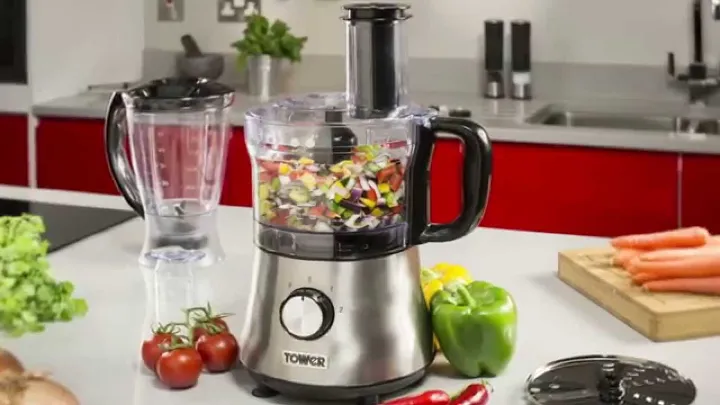
Crumbs of bread may be quickly and easily made from dried or stale bread. For a unique combination, try adding herbs.
Dough
Some food processors have a dedicated dough blade that allows you to knead dough without heat. Do not overdo it; instead, use the pulse setting. Dough that has been overworked will have stiff gluten strands and won’t rise well.
Shredding Cheeses
You can quickly acquire perfectly shredded cheese for casseroles and sauces using the shredding disc. Compared to store-bought pre-shredded cheese, fresh cheese melted better, and it has more taste.
Vegetable Shredding
The shredding disc is excellent for making mounds of coleslaw and shredding various vegetables like salads and hash brown potatoes.
Vegetable Chopping, Dicing, And Slicing
Vegetables should be diced, chopped, or sliced. Onions, peppers, carrots, celery, and other vegetables may be swiftly chopped or minced with the multipurpose blade. Switch towards the slicing disc to slice cheese, charcuterie, cucumbers, carrots, or other items. Cut precise slices for a savory and delicious vanilla bean sweet potato gratin.
Although veggies may theoretically be chopped in tiny batches in a blender, the consistency and appearance of your vegetables will vary as more liquid is produced during the process.
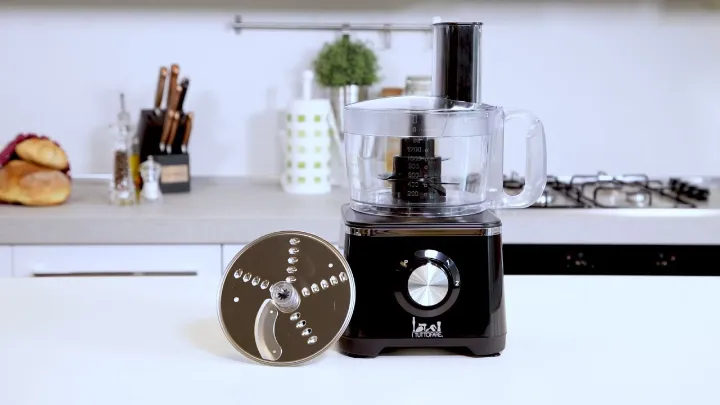
Due to a substantially faster blade speed (sometimes on low settings), which processes extremely quickly, chopping progress is more difficult to observe. Slices may be made using food processors that include slicing disc blades.
Pesto, Pâté, And Tapenades
A food processor makes rapid pesto sauces, olive tapenades, and pâtés possible. Quickly combine roasted garlic, lemon, spinach, and cashews for an adaptable spread or topping. To achieve the desired blended texture in your sauces or spread, you may regulate the size of the bits.
Riced Veggies, Such As Cauliflower
Vegetable ribbing is a simple technique to increase the diversity of a meal or cut down on the number of carbohydrates in your diet. With the ability to chop to your chosen size, the food processor’s sharp blades quickly and easily cut cauliflower florets for simple riced cauliflower and perhaps a broccoli-cauliflower mixture.
Mincing Meat
If you don’t have a stand-alone meat grinder or a stand mixer with a food grinder attachment, you may imitate grinding by chopping your preferred cuts of meat in a food processor. Because the raw slices encircle the blades, you cannot chop meat in a blender. Till the meat has the texture you like, use brief pulses.
Baby Food
By processing fresh fruits, vegetables, and other ingredients, you may gradually expose young children to more solid meals. As you move from smooth fruit smoothies to sliced carrots and so much more, you may pulse items to get chunkier results. Why was the food processor better than a blender in such cases? Its blades rotate slower than a blender to provide better control.
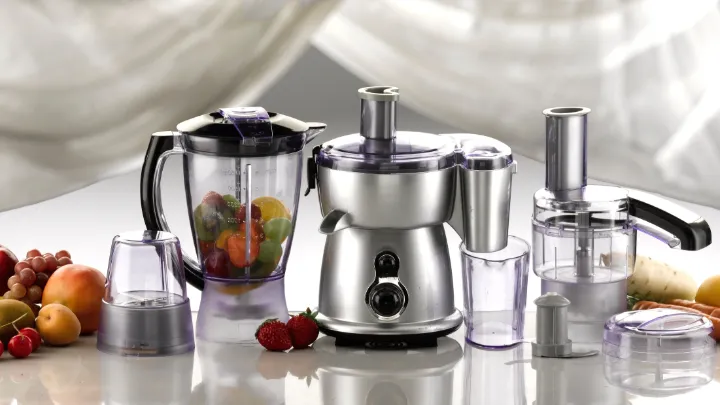
At slower speeds, the bigger s-shaped blades deliver accurate cuts. Blades in food processors can be used for a range of activities. You may add a small amount at a time and press or tamp the contents toward the blades using the feeder tube.
Comparison table: Food Processor vs Blender: What’s The Difference?
| Recipe | Food Processor | Blender |
| Batters | Capable | Not ideal |
| Biscuits (scones or crumpets) | Best | Never |
| Butters | Capable | Capable |
| Chopped vegetables | Capable | Never |
| Cookies | Capable | Never |
| Crusts | Best | Never |
| Dough | Capable | Never |
| Jams | Best | Best |
| Mashed vegetables (potatoes) | Best | Not ideal |
| Meatballs or patties | Best | Never |
| Pesto | Capable | Capable |
| Rosti, potato gratin or hashbrowns | Best | Never |
| Sauces | Best | Best |
| Shredded cheese | Capable | Never |
| Spreads | Best | Not ideal |
| Vegetable rice | Best | Never |
Can I Use A Food Processor As A Blender: How To Make Smoothies
Mix The Green Components First
This includes kale, spinach, chard, and other leafy greens. Due to their unusual size, they might occasionally be the hardest to combine well (even in blenders). That can be helped by blending them first.
Add The Frozen Fruits To The Greens
Frozen fruits can ensure a richer, icier, and much more refreshing smoothie. To ensure that all the ingredients are uniformly incorporated, add fruits and berries one kind at a time. You can add ingredients with the help of a shot (tunnel) at the top.
Include Any Supplements, Powders, Or Extra Nutrients
Include supplements, powders, or extra nutrients like seeds, fats, flakes, or berries that will improve your health. A few possibilities are maca powder, coconut oil, raisins, hemp seeds, raisins, or cacao.
Include The Liquid Base In The Amalgamation
The liquid basis is any liquid that gives the smoothie volume and makes it pourable. Examples of milk made from animals or plants, coconut water, or ordinary water. If you want to add yogurt or Kefir, this will add taste and function as a thickener. You may also add flavors like juices or chilled coffee.
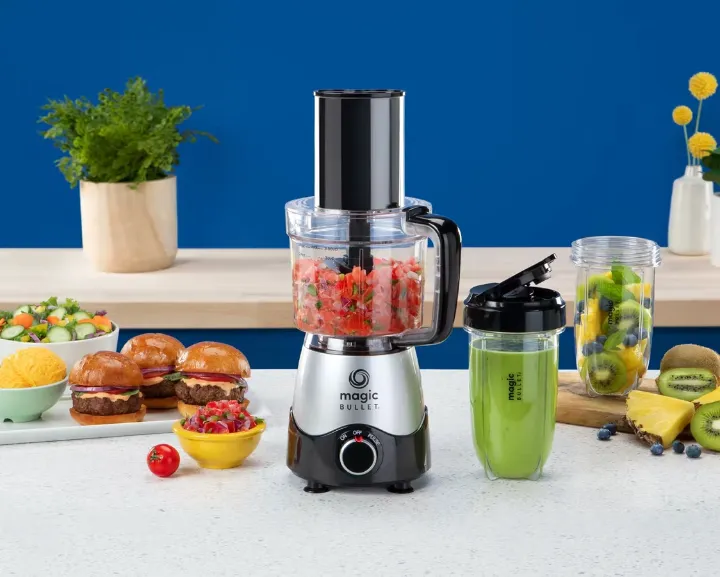
Include Your Sweeteners
These include agave nectar, maple, honey, simple syrup, and honey. Before serving, ensure all ingredients are thoroughly combined and mixed.
Take Off The Food Processor’s Blades
Take off the food processor’s blades, then serve the smoothie immediately. The food processor lacks a spout, making it more challenging to pour your smoothie than the blender.
Advice And Methods
These guidelines also apply for blending any liquid preparation, such as stews or drinks.
- Don’t fill the food processor with all of the ingredients. The components may not mix uniformly since the blender is designed to smash, chop, and ground food. Another issue is the possibility of liquid dripping from the bowl’s central vent.
- Avoid adding too much liquid to the dish. Instead of filling the container to the brim, prepare several smaller batches of a smoothie if you want to make a big amount.
- Crush the ingredients beforehand. This will guarantee a smooth mix rather than a soup that is too thick.
- Fruit is frozen in use. Because the cool temperature makes the liquid thicker, people add ice to smoothies. To thick the liquid without the ice melting and add extra water, use frozen fruit as the temperature will still be suitable.
After some time, a product with too much ice becomes diluted.
Can I Use A Food Processor As A Blender: FAQs
What are the benefits of using a food processor as a blender?
A food processor can be a great alternative to a blender, especially if you are looking for a more budget-friendly option. A food processor can chop and puree just as well as a blender and can be used for tasks such as shredding and slicing. Additionally, many food processors come with attachments that allow you to do more with the appliance, such as making dough or grinding meat.
Is it safe to use a food processor as a blender?
Yes, using a food processor as a blender is perfectly safe. Many food processors come with attachments that allow you to use them like a blender. Just read the manual with your appliance to ensure that you are using it correctly.
What are the disadvantages of using a food processor as a blender?
The main disadvantage of using a food processor as a blender is that it is not as powerful as a dedicated blender. Additionally, food processors can be more difficult to clean than blenders since they have more nooks and crannies. However, a food processor is a great choice if you want a more budget-friendly option.
Can I use a food processor to chop vegetables?
Yes, you can use a food processor to chop vegetables. Just add your desired veggies into the appliance and pulse until they are chopped to the desired size. You can also use the shredding attachment on many food processors to quickly and easily shred veggies.
What are some other uses for a food processor?
In addition to chopping and pureeing, a food processor can also be used for tasks such as shredding, slicing, and even making dough. Many food processors come with attachments that allow you to do more with the appliance.
Conclusion
“Can I use a food processor as a blender?” Yes, a food processor can be a great alternative to a blender, especially if you are looking for a more budget-friendly option. A food processor can chop and puree just as well as a blender and can be used for tasks such as shredding and slicing.
Additionally, many food processors come with attachments that allow you to do more with the appliance, such as making dough or grinding meat. Just read the manual with your appliance to ensure that you are using it correctly.
G Patel has been honing his craft in the restaurant industry for over 25 years. After graduating from North Carolina State University with a degree in business, G set out to turn Eschelon Hospitality into a recognized brand throughout Carolina’s state restaurants; and he did just that when acquiring Mura North Hills. Since then, it has become an iconic sushi-serving establishment.

